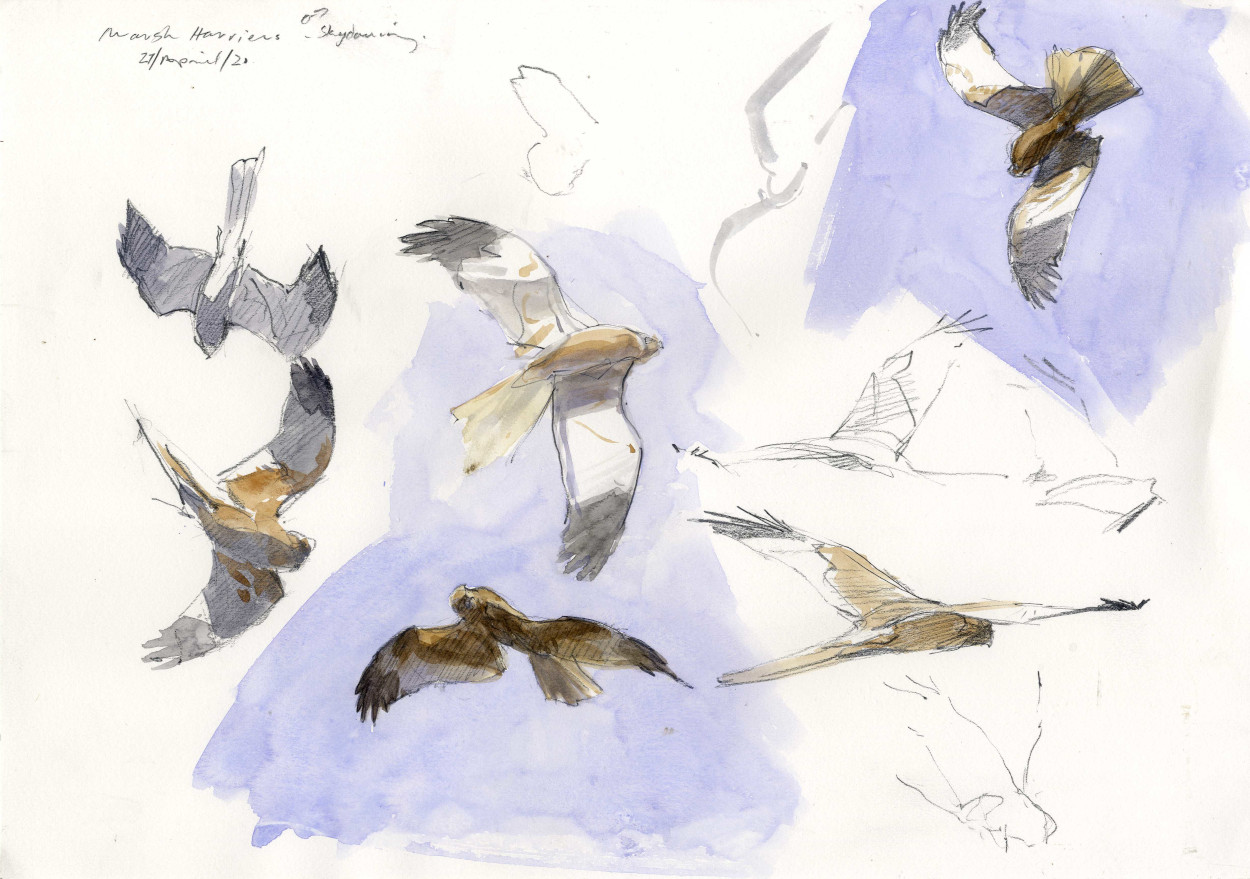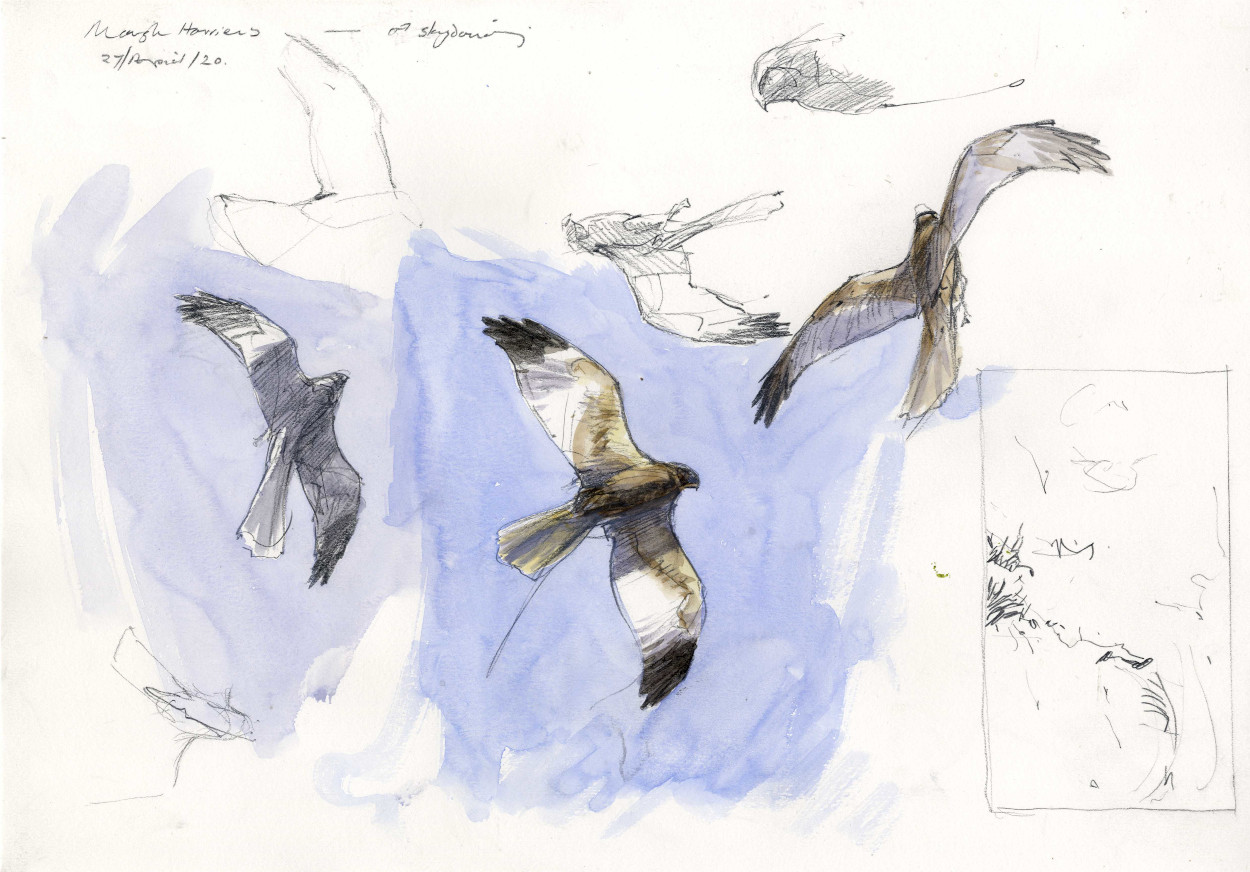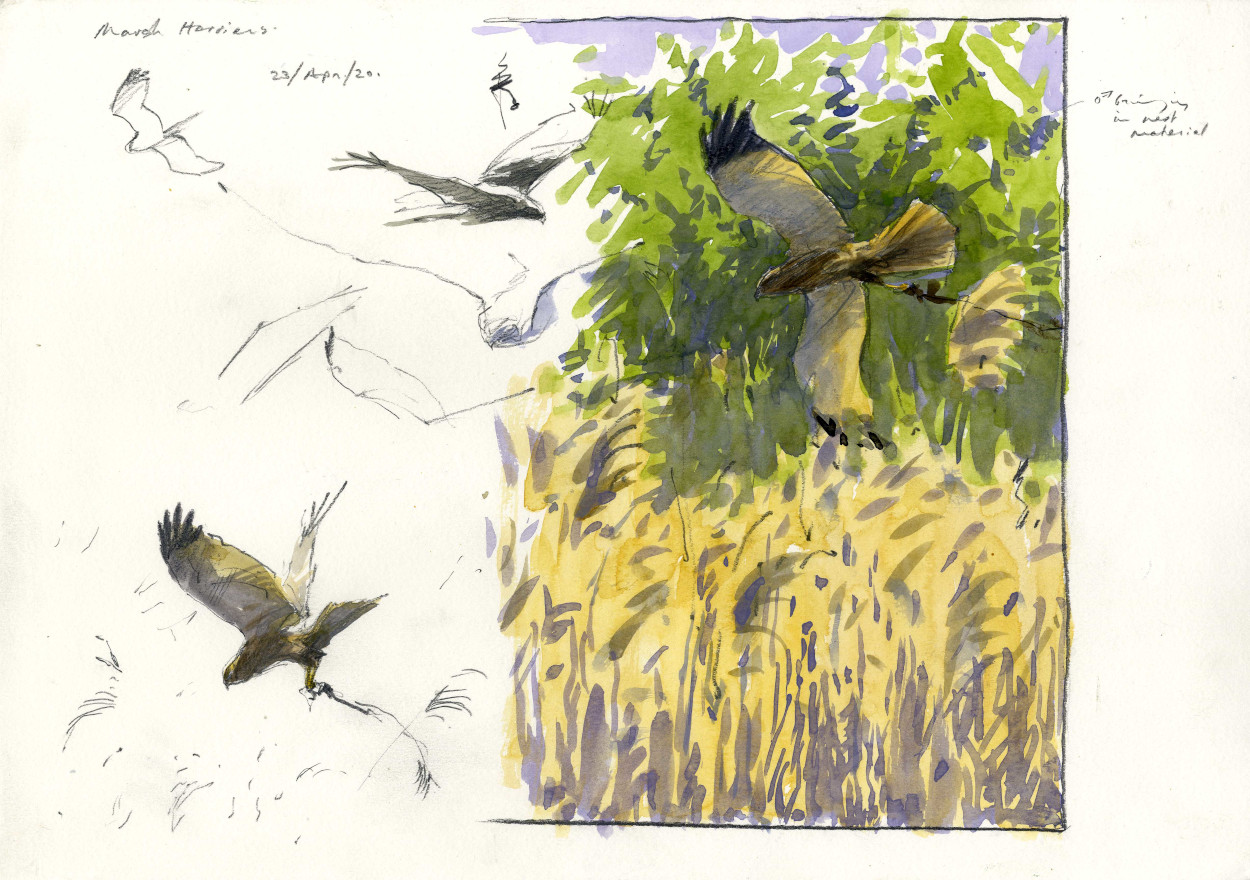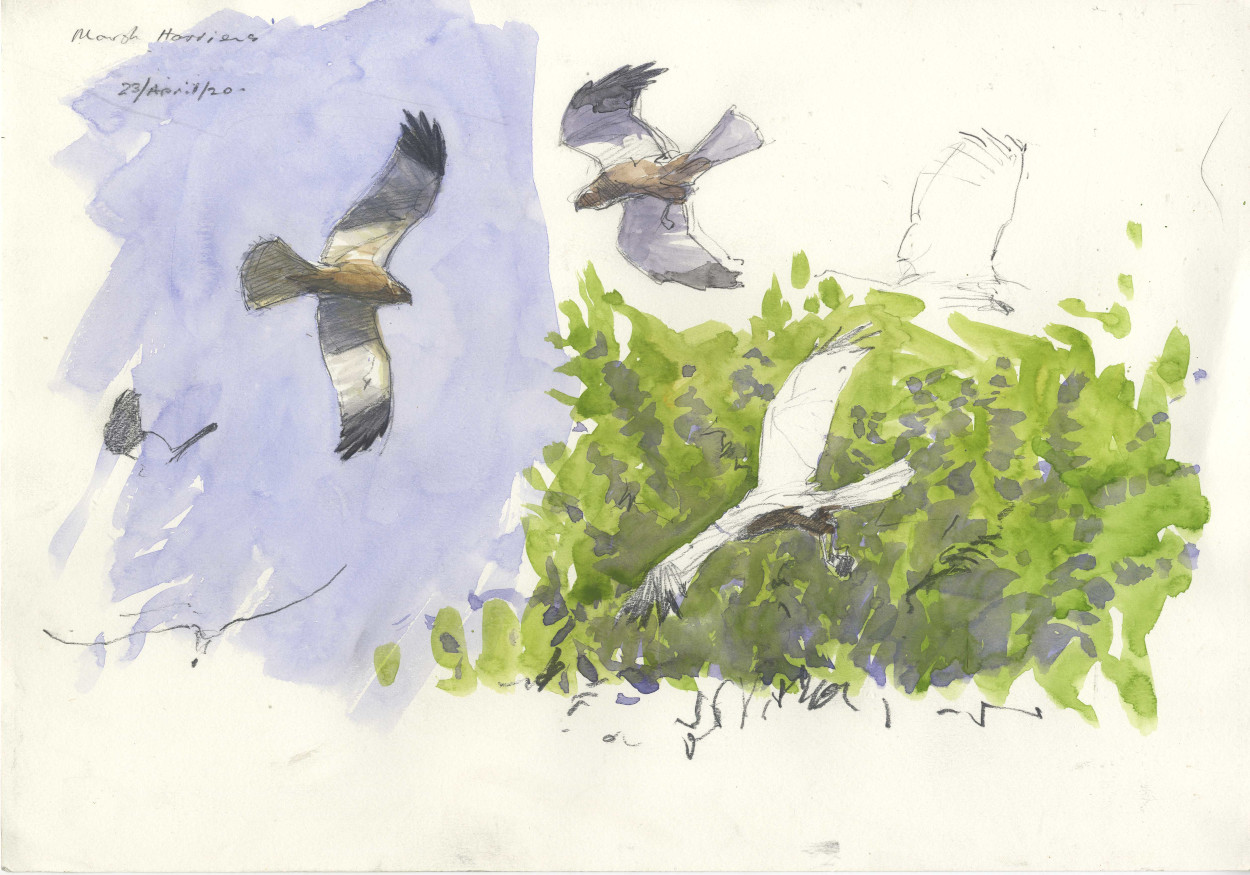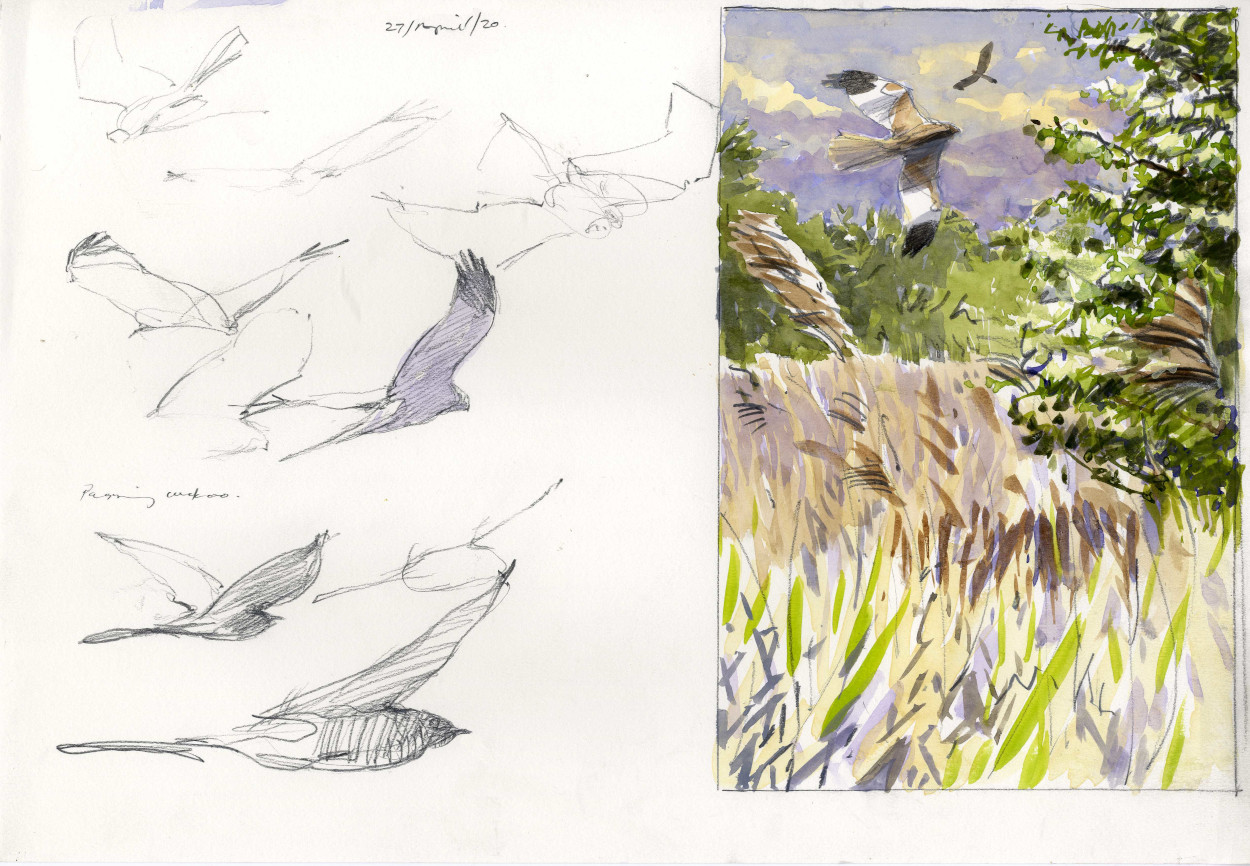
Sky-dancing Marsh Harriers
May 2020
Like everybody else I've been observing all the coronavirus requirements, including the instruction to stay at home and only go to work if absolutely necessary and when working from home isn't possible. Part of my work I do from a conventional studio a short distance from my home and I've not been in it for about two months, but my other work place is the great outdoors. So, I've been cycling out to a particularly interesting place to carry on working, which is also part of my daily exercise routine. It is a patch of fen where marsh harriers are very active - five individual birds through the course of one particular day (3 male birds and 2 females). They've been sky-dancing, food passing and bringing in nest material, and one of the males spent 20 minutes chasing off a red kite. I've heard one of the male harriers calling from so high up its been almost out of sight. I've heard a cuckoo and watched it fly by and settle in a hawthorn. There have been orangetip and brimstone butterflies flitting about, and common lizards scurring around on old stooks of cut reeds. And from where I've been sitting I've listened to sedge warblers, blackcaps and cettis warblers all around heralding the start of summer. I've been on my own, isolated in a remote corner of a landscape, hidden away, speaking to no one - just enjoying being out, and being at work. |
|
The sky-dancing ritual of the marsh harrier is a spectacular sight. Soaring to great heights with odd stiff and exaggerated wingbeats between tight gliding turns with tail fanned the male gains tremendous height – sometimes until barely visible to the naked eye - right up there he circles and makes exaggerated wing flapping motions swinging around in the wind mewing almost continuously. Then, still calling, he begins to plunge down tumbling and turning, dropping as if dead turning half over this way and that. Closer and closer to the ground he tumbles then suddenly rises and flips upside down and rolling over starts dropping again very fast. Almost at reed height he suddenly spreads his wings and turning sharply sweeps down into the chosen nesting site and vanishes into the marsh. Sometimes the female seems to be in the near vicinity, sometimes right up high until also just a speck. The whole procedure is spectacular!
|
|
|
|
(Above). These sketches focus on the food pass and the way the form of the birds, when they are low-down, intersects with the reeds and essence of the fens and its colours. Also, a passing cuckoo - quite a rare summer sighting these days!
To make a food pass the male approaches the nest site carrying food and calls the female to him; she flies up and they twist and turn, chase and tease until the provider is flying just above the female. In an instant the male drops the food and the female flips over upside down to catch it in her talons. The transfer completed, the female usually returns to her nest to consume her gift of a meal, but sometimes goes instead to a so-called “false nest” specially constructed by the male to amplify his prowess as a breeding mate.
Raptors (birds of prey) perform spectacular aerial displays during the breeding season, but their complexity and function is still not fully understood. Male birds of many species provision their mate during the breeding season with food passes and perform sky-dancing routines - but none do it in quite such style as the Marsh Harrier.
© 2025 Bruce Pearson. All rights reserved.
